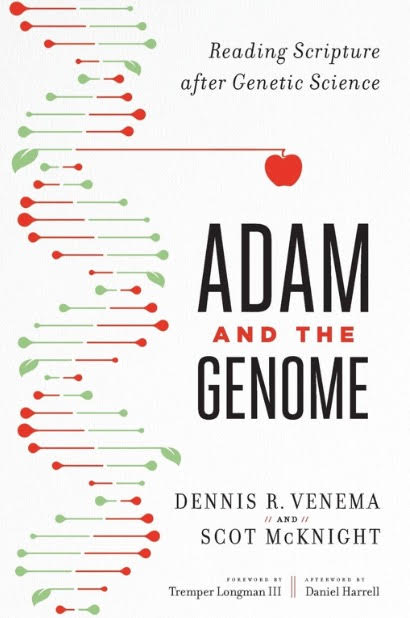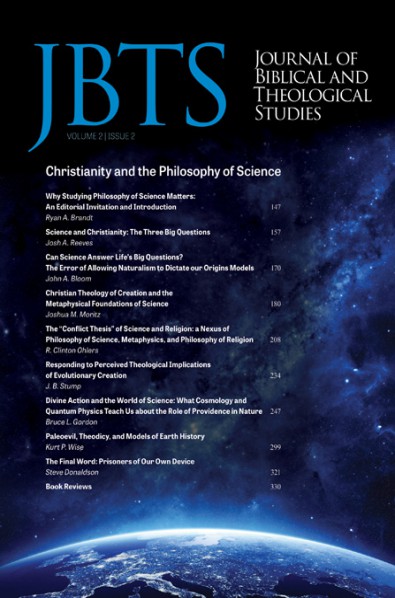


Will the Real ‘Soul’ Show Itself?
Barry C Newman, July 2006.
Download PDF
Will the Real ‘Soul’ Show Itself?
Barry C Newman
Barry Newman was formerly a senior lecturer in science education, Head of the School of Teacher Education and Director of the Board of Studies in Professional Studies at the University of New South Wales. He is a lay preacher attached to the Anglican Church, Christ Church St Ives, Sydney, Australia.
This paper is based on an address given at a meeting of ISCAST, Sydney, Australia, 13 March 2006.
Abstract
The Old Testament Hebrew word nephesh and the New Testament Greek word psuche are often translated ‘soul’ An examination of their usage in the Testaments reveals that neither is very commonly associated with life after death.
There is a high association of each with death but death in terms of the cessation of life. Usage of each word often seems to stress the significance of the person. There is no evidence in either of the Testaments that unequivocally suggests that the soul is an entity resident within the body that departs at death. Rather the little evidence there is suggests that after death there is a person identifiable with the person before death. Translations would probably be more helpful if the word ‘soul’ were avoided altogether.
Key Words
Soul, nephesh, psuche, person, life, death, semantic domains
Introduction
If we were sure what the ‘soul’ really is, our philosophical and scientific debates on the subject and related issues would be so much easier to follow. One way forward is to examine afresh the biblical evidence. Two words immediately suggest themselves for scrutiny – the Hebrew word nephesh (w�. _.Jand the Greek word psuche (l!Jux1J. These words have been the subject of considerable study over the years. This article simply represents a fresh and independent approach.
Methodology
The procedure adopted was an examination of all instances of nephesh in the Massoretic Old Testament Hebrew Text followed by an examination of those passages in the Greek Septuagint (LXXJ of the Old Testament where nephesh occurred in the Massoretic Text. All instances of psuche, the dominant word replacing nephesh in the LXX, were then examined in the New Testament Greek text. Each occurrence was categorized in terms of context and/or sense. Once the categories for nephesh were finalized the same category system was tentatively applied to all instances of psuche of the New Testament. The same basic category system was found to be suitable for both. The categories indicated the nature of the semantic domains involved. Of course, any category system is problematic, being determined by one’s mental idiosyncrasies.
The categories also indicated how nephesh and psuche might be translated using words other than ‘soul’. An analysis was performed to see how translations over time have avoided using the word ‘soul’. A question that underlies discussion throughout this paper relates to whether or not the soul is an object that requires serious scientific and philosophical consideration.
Nephesh in the Massoretic Text of the Old Testament
Of the 754 instances of nephesh in the Massoretic text, categorization involved 69 occupying two categories and two occupying three categories. On ten occasions nephesh appeared related to a physical organ such as the neck, throat or breath. Examples include: women having a nephesh container (hanging around the neck?J; Sheol enlarging its nephesh to receive the dead; Leviathan’s nephesh kindling coals; a woman breathing out her nephesh as she dies. There are 21 instances where reference is made to the nephesh of God. Most commonly his nephesh is ill-disposed or well-disposed towards another. In 27 instances, the nephesh of animals is mentioned, often in terms of their life or death. There is one occasion where the nephesh of idols is mentioned.
The human being nephesh
There are 694 occurrences of N (nepheshJ that relate to human beings. In categorization, 56 were duplicated and two triplicated. Table 1 indicates major categories, sub-categories, number of occurrences and percentages. The first and second percentages are based on 754 and 694 respectively. The figures within parenthesis take account of nine duplications that occurred within major categories. Although nephesh in the singular is sometimes used holistically, as in the nephesh of Israel, its predominant usage is individualistic. The categorization utilized made no distinction.
|
Major Category |
Sub-Category |
Number of Occurrences |
Percentages |
|
The N in association with death |
|
281 |
37; 40 |
|
|
The dead N |
11 |
|
|
|
The N that has died |
35 |
|
|
|
The N to be excommunicated |
18 |
|
|
|
The N whose life will be removed |
22 |
|
|
|
The N under threat of death |
102 |
|
|
|
The N delivered from death |
39 |
|
|
|
A request for the N to be delivered from death |
21 |
|
|
|
A request for the N to die |
6 |
|
|
|
The N for whom death will not occur |
25 |
|
|
|
The N that returns to give life |
2 |
|
|
The N in association with life |
|
17 |
2; 2 |
|
The N in association with food |
|
66 |
9; 9 |
|
|
Actual |
45 |
|
|
|
Metaphorical or use of simile |
21 |
|
|
The N as the person |
|
61 |
8; 9 |
|
|
An explicit number of N |
27 |
|
|
|
An indefinite number of N |
32 |
|
|
The N as the self |
|
63 |
8; 9 |
|
The improper N |
|
47 |
6; 7 |
|
|
Wicked |
36 |
|
|
|
Defiled |
11 |
|
|
The upright N |
|
50 |
7;7 |
|
|
The righteous/noble |
7 |
|
|
|
Obeying/seeking God with the N |
25 |
|
|
|
Obeying/seeking God with all the N |
18 |
|
|
The N that loves other than God |
|
15 |
2; 2 |
|
The emotional N |
|
59 (57J |
8; 8 |
|
|
Pain/distress/despondency |
31 |
|
|
|
Grief |
12 |
|
|
|
Delight |
8 |
|
|
|
Fright |
6 |
|
|
|
Anger |
2 |
|
|
The N that desires |
|
37 |
5; 5 |
|
|
The N desires/wills/craves |
25 |
|
|
|
The desire expressed as the N |
12 |
|
|
The vocal N |
|
31 (24J |
3; 3 |
|
|
The N that blesses/praises |
14 |
|
|
|
The N that speaks |
3 |
|
|
|
The N that addresses itself |
12 |
|
|
|
The N that is silent |
2 |
|
|
The N and its mental state or activity |
|
37 |
5; 5 |
|
|
The N that hates/scorns |
9 |
|
|
|
The N that muses/thinks |
4 |
|
|
|
The N that is watched over by oneself |
4 |
|
|
|
The N that knows |
3 |
|
|
|
The N that is spoken to |
3 |
|
|
|
The N that is pleased |
3 |
|
|
|
The N that remembers |
2 |
|
|
|
The N that can deceive itself |
2 |
|
|
|
Other |
7 |
|
Table 1
The most highly populated category is that associated with death- generally referring to the cessation of life. Taking all instances together, the human being nephesh is the person, the being, the self who dies, lives, is hungry, is filled, is wicked or righteous, hates or loves, desires, speaks, is grieved or happy and thinks etc. The usage of nephesh stresses the existence and functioning and thus the significance of a being. That nephesh can be spoken of with reference to God and the animals, supports this last understanding.
The following semantic connections involving all instances of nephesh are hypothesized. The neck/throat is associated with breathing, the intake of food and the utterance of speech. Breath, speech and food are associated with life and death. Finally, life involves various characteristics of the person including mental states and activities.
The human nephesh and its existence after death
There are about five texts where it is arguable that nephesh refers to a ‘soul’ that at death leaves the body or at life after death re-enters the body: ‘In the going out of her nephesh Rachel died’ (Gen. 35:18J; ‘Let the nephesh of the boy return to him’ (1 Kings 17:21J; ‘The nephesh of the boy returned to him’ (1 Kings 17:22J; ‘She has breathed out her nephesh’ (Jer. 15:9J and ‘You will not abandon my nephesh in/to Sheol’ (Ps.
16:10J. However, in the first four instances the reference could be to breath. The fifth could either relate to the person’s existence beyond death or the person’s not dying. There is no compelling argument from these texts that the ‘soul’ is an entity that inhabits the living body and leaves at death.
Psuche in the Greek Septuagint {LXX} of the Old Testament
Table 2 indicates to what extent the LXX uses psuche as a replacement for nephesh. The first percentage is based on a total of 754 and the second on a total of 737. The latter total takes into account the seventeen occurrences where the Hebrew text is absent from the Greek text.
|
Matter in the Greek text in the place of nephesh of the Hebrew text |
Number of Occurrences |
Percentages |
|
Textual material absent from the Greek text |
17 |
2.3; not applicable |
|
Psuche |
675 |
89.5; 91.6 |
|
No Greek word but meaning similar |
29 |
3.8; 3.9 |
|
Other Greek words and meaning similar |
20 |
2.7; 2.7 |
|
Texts contain different understandings |
13 |
1.7; 1.8 |
Table 2
Of the twenty instances where an alternative to psuche was used, one word was used five times, another four, with all other alternatives being
used only once or twice. Psuche in the LXX is the main word that replaces nephesh in the Hebrew text and therefore the most likely word one should examine in the Greek text of the New Testament.
Psuche in the Greek New Testament
As a further check on psuche of the New Testament being similar to nephesh of the Old Testament, an examination was made of the five quotations in the New Testament of an Old Testament text where nephesh occurred. In every case psuche was used in both the New Testament and the LXX.
There are 103 instances of psuche in the New Testament. To these were added nine other instances involving the three related forms: psuchikos
(l!JuLKOc;J, dipsuchos (fLl!JuOc;J and oligopsuchos (6ALYOl!JuOc;). Of the 112 occurrences, two refer to the psuche of God and two to the psuche of animals.
The human being psuche
There are 108 instances of psuche (PJ relating to human beings. In applying the same categorization system that was used for nephesh, there were six duplications. Table 3 indicates major categories, sub-categories, number of occurrences and percentages.
|
Major Category |
Sub-Category |
Number of Occurrences |
Percentages |
|
The P in association with death |
|
40 |
35; 37 |
|
|
The P type body yet to die |
3 |
|
|
|
The P that has died |
3 |
|
|
|
The P whose life will be removed |
8 |
|
|
|
The P whose life will be removed spiritually |
5 |
|
|
|
The P under threat of death |
7 |
|
|
|
The P under threat of ‘death’ |
4 |
|
|
|
The P delivered from death |
4 |
|
|
|
The P delivered from death spiritually |
6 |
|
|
The P in association with life |
|
3 |
3; 3 |
|
The P in association with |
|
5 |
4; 5 |
|
food |
|
|
|
|
|
Actual |
4 |
|
|
|
Metaphorical |
1 |
|
|
The P as the person |
|
8 |
7; 7 |
|
|
An explicit number of P |
4 |
|
|
|
An indefinite number of P |
4 |
|
|
The P as the self |
|
21 |
18; 19 |
|
The improper P |
|
13 |
11; 12 |
|
|
Wicked |
7 |
|
|
|
The P of self interest |
6 |
|
|
The upright P |
|
8 |
7; 7 |
|
|
The righteous/noble |
2 |
|
|
|
Obeying/seeking God with all the P |
3 |
|
|
|
The P not of self-interest |
3 |
|
|
The emotional P |
|
5 |
4; 5 |
|
|
Pain/distress/despondency |
3 |
|
|
|
Grief |
1 |
|
|
|
Faint-heartedness |
1 |
|
|
The P that desires |
|
1 |
1; 1 |
|
The vocal P |
|
1 |
1; 1 |
|
|
The P that blesses/praises |
1 |
|
|
The P and its mental state or activity |
|
10 |
9; 9 |
|
|
The P that is spoken to |
2 |
|
|
|
The P having a disposition |
2 |
|
|
|
The P to be established |
2 |
|
|
|
Others |
4 |
|
Table 3
A comparison of Tables 1 and 3 reveals that almost all major categories for nephesh and psuche are held in common. Additionally, the most populated category for both nephesh and psuche is that associated with death-generally referring to the cessation of life. Given the relatively small number of instances of psuche, attempts at more detailed comparisons are unwarranted. The usage of psuche, as with nephesh, stresses the existence and functioning and so the significance of the being. Again that there are references to both God’s nephesh and that of animals increases the plausibility of this understanding.
The same type of semantic linkages that were made for nephesh, can be made for psuche, except for the absence of clear references to the neck/throat and breath. However it is possible that Paul in Rom. 16:4 is making a connection between neck and psuche in referring to people risking their necks for his psuche, and there might be a reference to breath in Acts 20:10 where it is said that the nephesh of Eutychus might still be in him.
The human psuche and its existence after death
Unlike the situation with nephesh, there are clear instances where psuche corresponds to some entity having existence after death. There are four: ‘You will not leave my psuche in Sheol’ (Acts 2:27, quoting Ps. 16:10J; ‘Fear those who are able to kill the body but not the psuche’ (Matt.
10:28J; ‘You fool this night I will require of you your psuche’ (Luke 12:20J; ‘I saw under the altar the psuche of those that had been slain’ (Rev 6:9J. There are two instances that are less clear: ‘His psuche is still in him’ (Acts 20:10J-a possible reference to his breath and ‘I pray that your body, psuche and spirit will be preserved spotless at the coming of our Lord Jesus Christ’ (1 Thess. 5:23J-an oddity here is the reference to ‘body’. The reference in 1 Cor. 15: 44-46 to ‘the psuche type body first and then the spiritual’ and ‘the first Adam as the living psuche but the second Adam as the spirit’ add to what appears to be inconsistencies in usage. Though no consistent picture emerges for the usage of psuche in association with death, there is a psuche beyond death which has an identity with the psuche before death. However, given the general nature of psuche, there is no strong case that psuche refers to an entity within a being that leaves after death, rather it is maintained that it is a reference to the being itself which has an ongoing existence identifiable with the being who existed before death.
The Semantic Relationship between Nephesh/Psuche and ‘Heart’ and ‘Spirit’
Other similar studies by this author, not yet published, of the Hebrew and Greek words commonly translated ‘heart’ and ‘spirit’, indicate that they have semantic domains that overlap with that for nephesh/psuche. None the less the overall focus in each case is different. When related to human beings, the words for ‘heart’ centre on mental states and mental functioning, the words for ‘spirit’, though very diverse in application, have a focus on the non-tangible, though vibrant life of the person, while nephesh and psuche focus on the existence and functioning of the person.
Translating the Human Being Nephesh and Psuche by other than ‘Soul’
It is the tenet of this paper that the English word ‘soul’ need never be used and if it were never used some of the confusion that exists could probably be avoided. Alternatives would include: omission of any word altogether, or using words such as ‘person’, ‘life’, ‘creature’, ‘self’ (reflexivelyJ, ‘being’ and ‘desire’. There has been a growing trend since the Kings James Version of 1611, to replace ‘soul’ with such words, though the English Standard Version has somewhat reverted to earlier times. See Table 4 below. However, as a result, the English reader when coming across the word ‘soul’ will be unaware of the wide semantic domains for nephesh and psuche and so perhaps be inclined to read more into ‘soul’ than is justified.
|
|
Total Occurrences |
Year of Publication |
||||||
|
|
|
1611 |
1885 |
(1901J (ASBJ 1963 |
1952 |
1978 |
1989 |
2001 |
|
Version |
|
KJV |
RV |
NASB |
RSV |
NIV |
NRSV |
ESV |
|
Nephesh |
754 |
469 |
450 |
255 |
188 |
107 |
138 |
232 |
|
% |
|
62 |
60 |
34 |
25 |
14 |
18 |
31 |
|
Psuche |
103 |
55 |
51 |
47 |
43 |
19 |
33 |
41 |
|
% |
|
53 |
50 |
46 |
43 |
18 |
32 |
40 |
Table 4
Scientific and Philosophical Perspectives
If nephesh and psuche as they relate to human beings refer chiefly to their personhood then they do not automatically present themselves as objects for special scientific scrutiny or objection. That psuche does, and nephesh in one or two instances might, relate to the existence of persons after death is more of a philosophical problem than a scientific one. Some might consider life after death a subject for scientific enquiry but that is not a common perspective. Philosophical issues certainly pertain to such however-the question of how identity might be maintained, being one of the most problematic. That is a subject for another paper however though one in which the Biblical material does not seem to have an interest.
Bibliography
Brown, F, Driver, S, Briggs, C 1979, ‘w�. _.‘ in The New Brown-Driver-Briggs-Gesenius Hebrew and English Lexicon, Hendrikson, Peabody, MA, pp. 659-661.
Cooper, JW, 1989, Body, Soul and Life Everlasting, Eerdmans, Grand Rapids, MI. Koehler, L, Baumgartner, W 2001, ‘w�. _.‘ in The Hebrew and Aramaic Lexicon of the Old
Testament, revised by Baumgartner, W, Stamm, JJ, translated by Richardson, MEJ,
Study ed., vol. 1, Koninklijke Brill NV, Leiden, The Netherlands, pp. 711-713.
Liddle, HG, Scott, R, 1968, ‘l!Jux1‘ in A Greek-English Lexicon, with a supplement, revised by Jones, HS, Clarendon, Oxford, pp. 2026, 2027.
Louw, PJ, Nida, EA, eds., 1988, ‘l!Jux1‘ in Greek-English Lexicon of the New Testament based on Semantic Domains, United Bible Societies, New York NY, vol. 1, multiple pp. and vol. 2, Index to vol. 1, p. 266.
Schweizer, E 1974, ‘l!Jux1, l!JuLKOc;, cxvocl!Ju�Lc;, cxvocl!Juw, fLl!JuOc;, 6ALYOl!JuOc;’ in Theological Dictionary of the New Testament ed. Kittel, G, translated by Bromiley, GW, Eerdmans, Grand Rapids, MI, IX, pp. 608-666.
Seebass, H 1998, ‘ w�. _.‘ in Theological Dictionary of the Old Testament eds. Botterweck, GJ, Ringgren, H, Fabry, H-J, translated by Green, DE, Eerdmans, Grand Rapids, MI, IX, pp. 497-519.
Wolff, HW 1996, ‘nepes -Needy Man’ in Anthropology of the Old Testament, Sigler Press, Mifflintown, PA, pp. 10-25.










